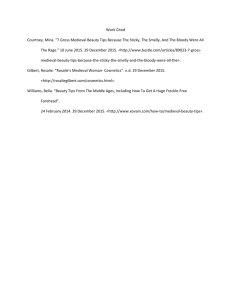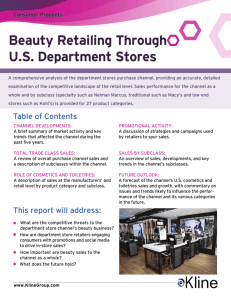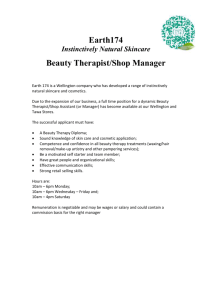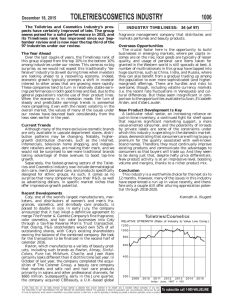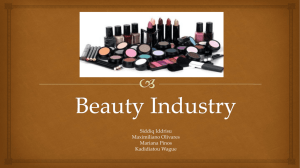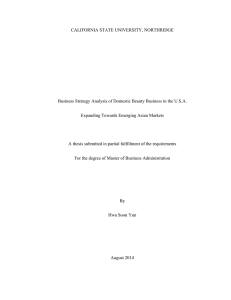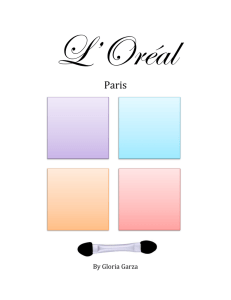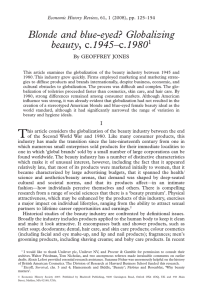L'Oreal_S3_F08
advertisement
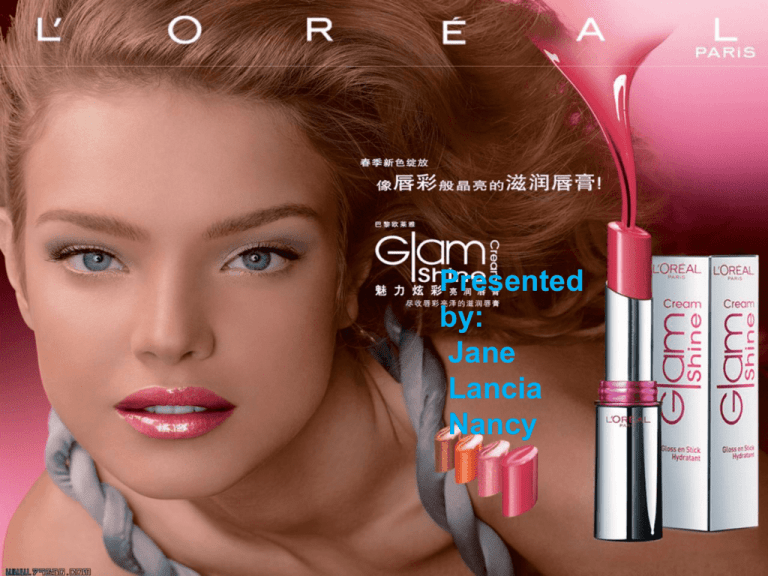
Presented by: Jane Lancia Nancy The L’Oreal history • 1907 – found by Eugene Schueller • 1912 -1920 Expanded to the US, Russia and Asia • 1953 - Issued a license to Cosmair • 1965 – Expand business into health and beauty products through acquisition • 1980s-1990s expanded acquisition • 2000 - hair and beauty products • 2001-now Acquisition hair care, skin care and color cosmetic company The history of cosmetics • 3750 BC - First used in Egypt • 7C-12C distillation procedure was invented • 18C-19C technology was used in the production of cosmetics • Mid 20C - About 500 cosmetics companies in the world • Being monopolized by multinational company by the end of 20C Global issues Brand acquisition & expansion (culture awareness & demographic differences) New York Maybelline New York China Chicago Vichy Establishment of “L’Oreal Institute for Ethnic Hair & Skin Research” Global issues Governmental intervention Localized laws (centrally planed economy) High import taxes and tariff Merchandise restrictions Cultural differences (Yuesai & Mininurse) Fierce competition (home, abroad, counterfeits) Future trends integrated industrial chain (generally) Major Support beauty services production of material professional instruments & cosmetics Matched industry ornament color service image design Media Base of talent resource exhibition advertisement beauty newspapers & magazines beauty education Company Analysis Strength 12 core brands account for 90% of its sales Strong R&D capability 5 R&D Center: France: Aulnay, Pairs America: Clark Japan: Kawasaki China: Shanghai ( Sept.2005) L’Oreal Sales Analysis L’Oreal-Geographic presence Weakness Weak performance in some areas North America: Shampoo & Conditioners—P & G In 2007: Europe:52.7% North America: 27.6% Other:19.7% German: Hair coloration– Henkel Western European: Hair styling Lack of uniform advertising support Opportunity The rapid growing cosmetic market Market: 12%; $1 billion(2010); American old people: form 13% to 20% Potential in emerging market Brazil Africa Asia Acquisition and alliance Diesel—Perfume Sanoflore—Organic cosmetics The Body Shop—International cosmetics brand Threat Fierce competition Moral issue on animal testing Naturewatch Compassionate Shopping Guide The Body Shop Competitors Domestic competitor Dior Abroad competitor Procter & Gamble Shiseido Dior • 1946, headquarter in pairs, France • Three categories: skin care, color cosmetics and perfume • Elegant and gorgeous design Procter & Gamble • Second –largest professional hair production company • The market share of 24%, L’Oreal is 29% • More than 300 brands in over 160 countries • Focused on hair care market in 2000 • The diversity in product • Major retailer-Wal-Mart Shiseido • Japan brand , found in 1872 • The first lotion –Eudermine • Fit for Asia skin • Range of customers ( 20-50 –year-old) • Innovation Recommendations Short-term “Green” products Focus on campus Sponsoring school activities Holding beauty lectures High-level image stores Image information consulting Beauty clubs for regular customers Market Share Long-term Expansion in emerging markets Brazil Russia India China Cultivating and attracting high-qualified beauty talents Raising brand awareness Media sponsorships TV commercials Conclusion--Formulas Strength Market Leader Weakness = = Opportunity Treat Recommendation Promising Future Lose Market

